Chuck Yeager was a decorated combat pilot and celebrated test pilot with the right stuff to break the sound barrier.
In 1947, when Chuck Yeager (born Charles Elwood Yeager) set out to break the sound barrier in the experimental X-1, the scientists were shaking their heads. The popular opinion in the scientific community was that supersonic flight was impossible, and that the plane would crash into the sound barrier and be shaken apart. His earlier flight in the same craft had run into problems as it approached Mach 1, suffering from violent vibrations and becoming unresponsive. It seemed that the scientists were right – these were the very problems that they had anticipated.
At Mach 1, the air in front of an aircraft would be compressed to the point where it was virtually a solid wall. Flying the world’s fastest plane into a solid wall seemed unwise to these learned gentlemen. And yet Chuck Yeager chose to place his faith in his friend and colleague, Jack Ridley. Ridley was the flight engineer on the X-1 program and was convinced that the sound barrier would succumb to the flying tail he had designed. Putting his life in his friend’s hands, Yeager was betting that the scientists were wrong. He was hanging everything on the hope that his rocket-powered vehicle would defy the laws of physics (as understood in 1946) rather than shaking apart and exploding with him inside.

If anyone was qualified to pull off a wild stunt like this, it was Chuck Yeager. A decorated combat pilot and top test pilot, he had been hand selected for this secret mission by top brass. They obviously had a great deal of faith in him. This faith may have been somewhat eroded if they saw what was in the cockpit beside him: Yeager was carrying a short length of wooden broom, which Ridley had prepared for him moments before take-off. The hand crafted wooden stick was not standard equipment, but he needed it to lock the cockpit door. This was because he had cracked his ribs two nights before, and lacked the strength to operate the latch on his bad side.
Of course, he hadn’t told anyone because that would mean missing the opportunity to fly the mission. In fact, to keep his injuries secret, he had avoided doctors and had instead persuaded a vet to treat him. On a mission so dangerous that the only safety provision was life insurance, a pilot whose injuries rendered him unfit for flight would pilot a rocket (which is essentially a controlled explosion) up against a barrier of solid air. Just to see if it could be done. And yet, against all odds, the mission was a success.
(This photo was taken by Chuck Yeager’s close personal friend and chase pilot Bob Hoover.)
After separating from the B29, which had carried the X1 to the correct altitude, he fired all four rocket chambers and ascended rapidly to 42,000 feet. Then he focused on speed, pushing the X1 to .96 Mach. Again, the craft started to shake, but he kept on, punching through the sound barrier with a loud boom. On the ground, his colleagues thought he had exploded, until they heard his voice, calmly speaking over the radio. The shaking had stopped after breaking the sound barrier, and the plane was handling smoothly.
(Silent footage from the USAF documenting the flight of the X1)
(Short documentary segment on the flight of the X1)
Yeager had proven that it was possible, making it possible for every supersonic craft since then. Jet fighters, spacecraft, and even supersonic passenger jets owe everything to the X1, and it’s dedicated pilot. But what drove him to do such a thing? What force compelled him? Was it courage? Faith? Recklessness? Was it visionary zeal, or a quest for personal glory?
In the case of Chuck Yeager, it was probably a little of each.
Obviously, as a test pilot, it was his job to risk all in the name of aviation progress and his country. But the X1 went beyond duty. Even professional test pilots thought twice about strapping themselves to a flying bomb to prove physics wrong. The original pilot had demanded a small fortune just for one test flight, which is how Yeager had got the job in the first place.
Courage and recklessness are two qualities that Chuck Yeager had no shortage of. His distinguished record and war adventures stand testament to his bravery. And he was often getting chewed out for his wild (but amazing) stunts, which left earthbound observers reeling. But besides courage and recklessness, Yeager had an unshakable confidence in himself, his friends, and his colleagues. This confidence was hard earned, and as it turned out, it was well placed too.
Chuck Yeager During World War 2
Yeager is widely recognized as one of the greatest pilots of all time. During his long career, his accomplishments have broken records and earned medals. With a visual acuity rated 20/10, he seemed a natural candidate for pilot training. But if the United States hadn’t entered the second world war, he would probably never have had the opportunity to earn his wings.
In 1941, when he enlisted, pilot training was strictly for college graduates. Yeager had graduated from high school with lackluster results, and never had the opportunity to go to college. His family was poor, and he had to work on the farm, where he gained practical knowledge and an understanding of mechanics. When he enlisted, he was put to work as an aircraft mechanic.
Upon entering the second world war, America needed pilots. And so they started to train non-commissioned officers without degrees, to make up the numbers. Despite his high aptitude and excellent vision, Yeager had a hard time learning to fly at first. He was afflicted with powerful nausea, and would frequently vomit mid-flight. But through sheer force of will, he was able to master the queasiness and become a top notch pilot at the same time.
Upon graduating as a pilot, Chuck Yeager was stationed in England and flew bomber escort missions in a P51 Mustang. It was during one of his early missions that the reckless side of his personality would surface. During a training flight, he and his wingman were diverted to provide top cover for a downed B-17 Flying Fortress. He spotted a German Junkers Ju 88 flying towards them and then broke formation to chase it. He managed to down them but was soundly reprimanded for his conduct.
On his eighth mission, he was shot down in the skies over France. Bailing out, he was stranded, alone in enemy-occupied territory, with a leg injury caused by shrapnel. Fortunately, in his youth, he had been a keen hunter and outdoorsman and had the survival skills necessary to stay alive. And so, through a series of close scrapes, he would walk to Spain and freedom. Sleeping in farmers’ barns and sneaking past enemy patrols by day, he would manage to contact the French resistance and help them to smuggle another downed pilot to freedom. For his resourcefulness and courage in rescuing the airman, he would later be decorated with the Bronze Star. But he was also to face great disappointment – downed pilots who had met the resistance were not allowed to fly again, in case they were captured and forced to betray their resistance contacts.
Not one to take setbacks lying down, Yeager took his grievances all the way to the top, in the form of a personal petition to General Dwight D. Eisenhower, the Supreme Allied Commander. Eisenhower was persuaded by Charles’ logic and got him back into combat. Yeager would later realize just how lucky he was to be placed back into combat – without the decorations he would receive for his service, he wouldn’t have been able to become an air force test pilot.
This was a smart move by Eisenhower, as Chuck Yeager was an excellent combat pilot. He was the first pilot in his group to down five enemies in a single day (referred to as ‘Ace in a Day‘), and he also beat one of the first German jet fighters. His skills extended to leadership, and he was given his own group to command. After 61 combat missions, Yeager returned to the US on January 15, 1945. He married his girlfriend Glennis Dickhouse (who was the namesake for his P-51 and later the X1 ‘Glamorous Glennis’), with whom he would have four children.
At the end of the war, he remained in the Air Force as a test pilot. Thanks to his war record, he was allowed to choose his assignment and decided to move back home in West Virginia. It was here, at the Wright Field, that he would come under the head of the Aeronautical Systems Flight Test Division. From this point, it was only a matter of time and luck before Yeager would find himself assigned to the X-1 project. The original civilian test pilot, “Slick” Goodlin1, had demanded $150,000 (the equivalent of $1,600,000 today) to fly the plane, with additional hazard pay for each minute he flew the craft over 0.85 Mach. Charles was happy to do it for honor and glory.
Following his success with the X-1, Charles would work with the X-1a team in 1953, who aimed to break his record and achieve Mach 2. His colleague Scott Crossfield would beat him, being the first pilot to fly at Mach 2 and earning the title “the fastest man alive.” Given his competitive nature, this wasn’t something that Charles would take lying down, especially as Crossfield was to be honored at a ceremony for the 50th anniversary of flight. And so he and Ridley worked together to beat the record before the event – and he managed it too, hitting Mach 2.44. At this speed, the plane lost its stability and spun out of control. After plunging 80,000 feet, Yeager was able to regain control and land, the craft and record intact. It was a stunning accomplishment and one that would earn him the Distinguished service medal.
The same year, he helped his friend Jackie Cochran to become the first supersonic woman, flying a chase aircraft during her attempt.
From test piloting, Charles Yeager would return to combat flying, taking command of the 417th Fighter-Bomber Squadron based in Germany. During this period, he would climb the ranks, becoming a colonel and eventually being posted as the commander of the USAF Aerospace Research Pilot School. Here, he was responsible for overseeing the training of USAF pilots and astronauts.
Never one to take root in one place for long, he continued to move from one assignment to another, commanding combat squadrons in different theaters and even acting as an advisor to the government of Pakistan. By the time he retired from military service, he had achieved the rank of Brigadier General.
But retirement did not mean giving up flight. In fact, in 2012, he celebrated his famous X1 flight be recreating it, breaking the sound barrier again aged 89!
There can be no doubt that Charles E. Yeager has earned his place in the National Aviation Hall of Fame several times over. His achievements are inspirational. He will remembered for the rest of time as the man who broke the sound barrier, but he has achieved more. He has had a lasting impact on the field of aviation. He has exemplified the importance of determination and what one can achieve with hard work and refusing to give up.
His courage is obvious from his actions. He helped a seriously injured fellow pilot to escape from occupied France even though it significantly increased the risk of capture. He proved his mettle through 61 missions, never once failing to bravely meet the enemy. He risked personal destruction to advance the field of aviation. He has risked his life to defend his country and fellow servicemen, in more than one conflict. And as a test pilot, he risked injury or death to ensure aircraft were safe for other pilots to fly.
He overcame the considerable obstacles that stood in his way to earning his wings. Refusing to let his humble background hold him back, pushing through crippling nausea until it was gone, avoiding capture to return to combat, and petitioning all the way up the chain of command to the supreme commander himself, even defying conventional scientific wisdom. These are all feats that exemplify refusing to give up an ambition.
Chuck Yeager acted as a good and loyal friend, helping others to succeed, accepting responsibility for other pilots and training them to be the best they can. He has lived a full life and continues to remain active, not resting on his laurels or slowing down to accommodate old age. In short, he is an inspiration to pilots today and for generations to come.
Footnotes:
1 – Goodlin denied ever demanding extra pay. In an interview with Air & Space Magazine in 1989, Goodlin said he had made a deal with Bob Stanley of Bell to pilot the first supersonic craft. However, when the project was turned over to the United States Air Force, it was decided that a man in uniform should pilot the craft, and so Chuck Yeager was selected as the new pilot.






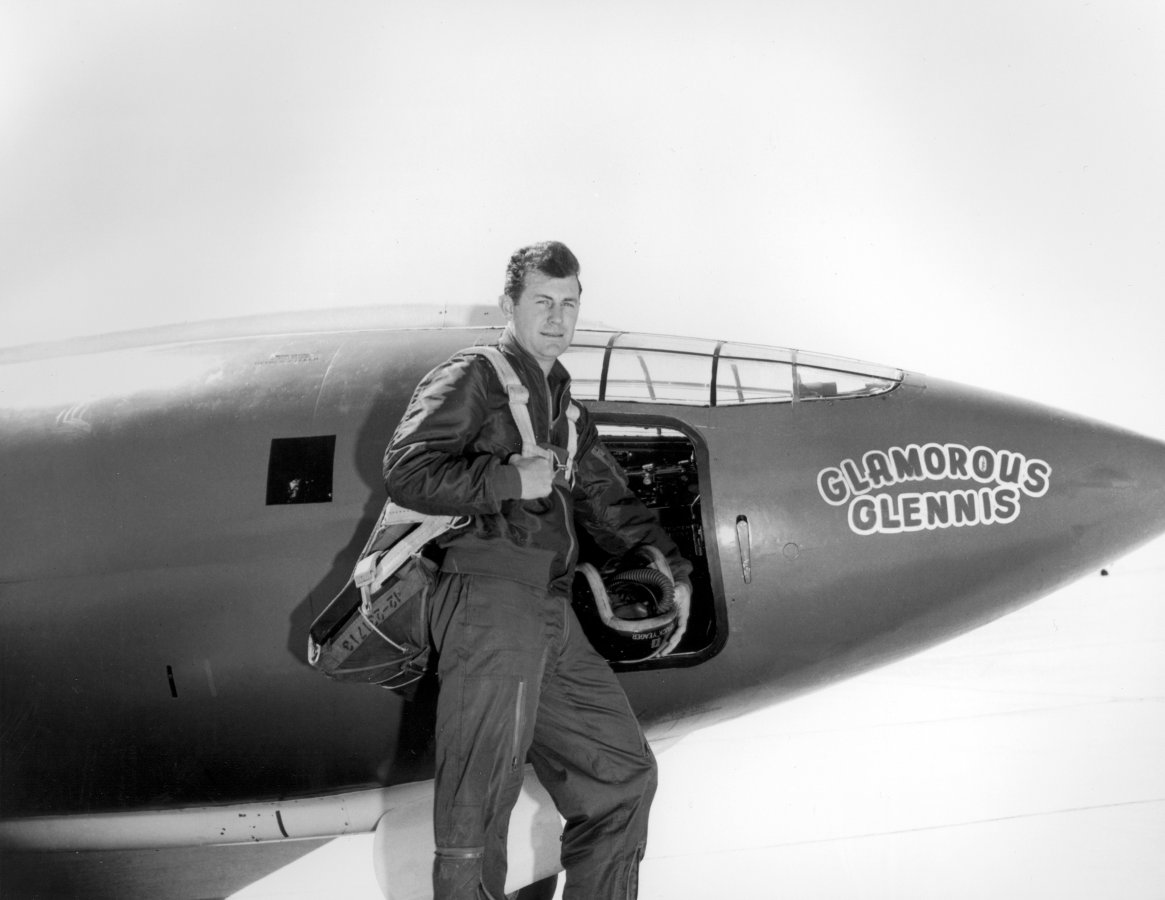

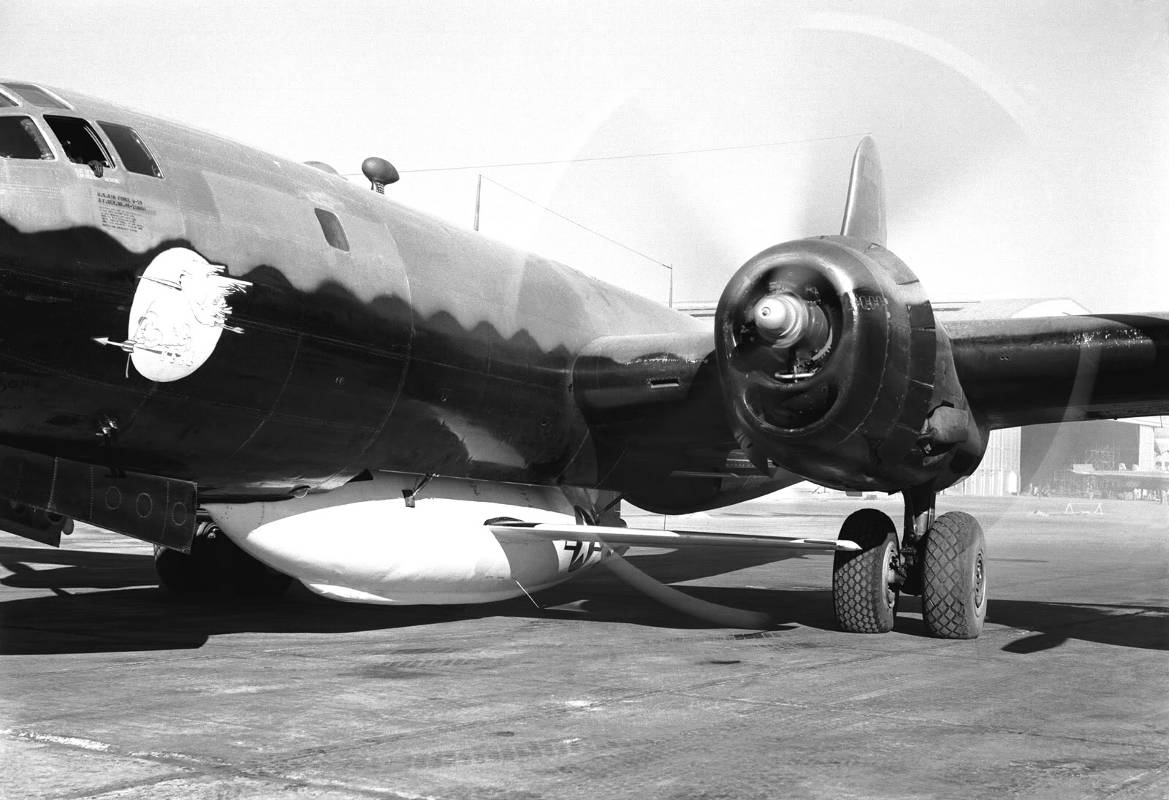


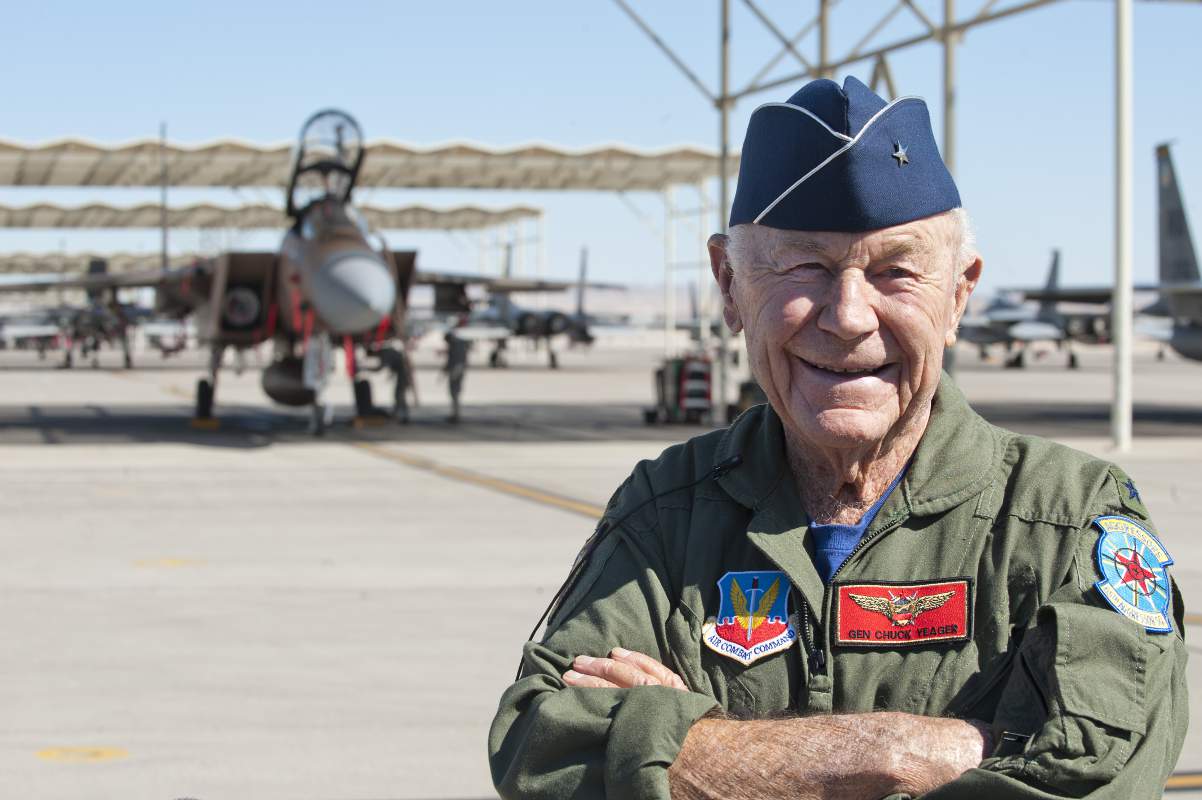





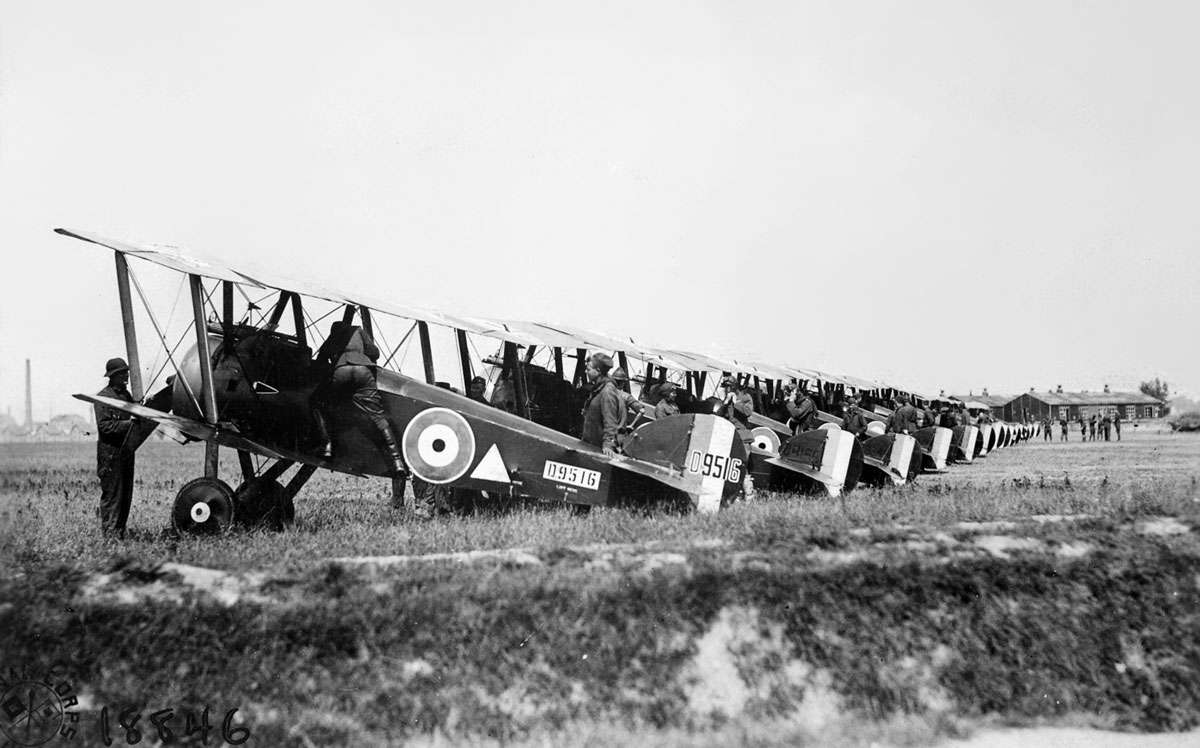
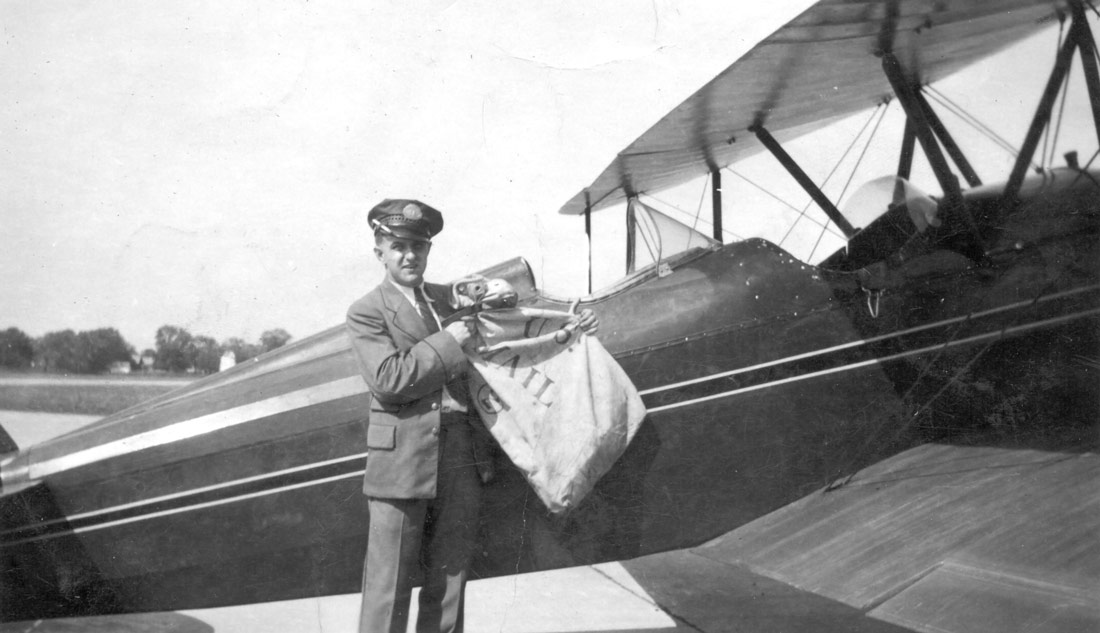
1 Comment